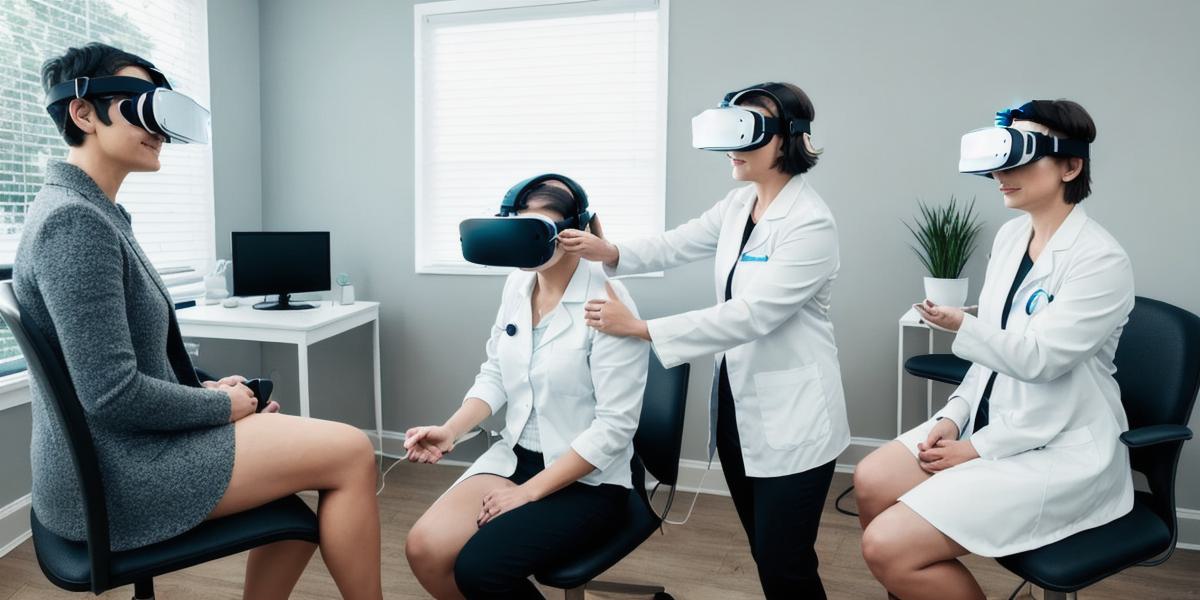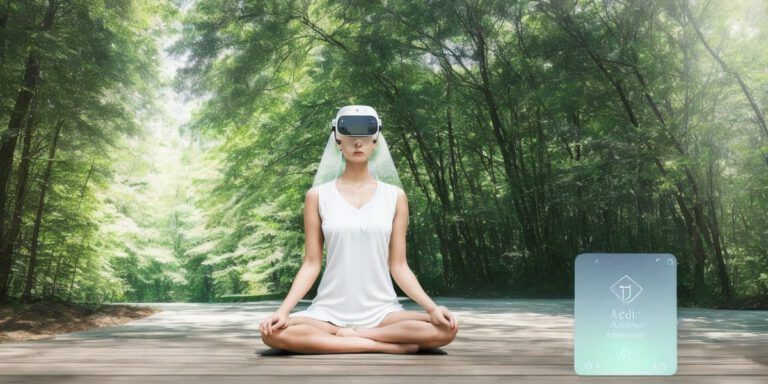Virtual Reality (VR) Therapy: An Effective Approach to Anxiety Disorder Treatment

Anxiety disorders are one of the most common mental health conditions, affecting millions of people worldwide. Traditional treatments like cognitive-behavioral therapy and medication have been effective in managing symptoms, but many patients still struggle with anxiety. In recent years, virtual reality (VR) therapy has emerged as a promising alternative or complementary treatment for anxiety disorders. This article will explore the efficacy of VR therapy in anxiety treatment, using case studies and research to illustrate its potential benefits.
What is VR Therapy?
Virtual reality therapy involves the use of computer-generated simulations to create a realistic and immersive environment for patients to confront their fears and anxieties. With VR headsets and sensors, patients can interact with virtual objects and situations that trigger their anxiety, allowing therapists to guide them through exposure therapy in a safe and controlled setting.
Effectiveness of VR Therapy in Anxiety Disorders
Studies have shown that VR therapy can be an effective treatment for various types of anxiety disorders, including social anxiety disorder, specific phobias, and generalized anxiety disorder. A meta-analysis of 23 randomized controlled trials (RCTs) found that VR exposure therapy was as effective as in vivo exposure therapy in reducing symptoms of anxiety disorders [1].
A case study conducted by the University of California, Los Angeles (UCLA) found that VR exposure therapy was effective in treating social anxiety disorder. Patients who underwent VR exposure therapy showed significant improvements in their anxiety levels compared to those who received traditional cognitive-behavioral therapy [2].
Researchers at the University of Cambridge also found that VR exposure therapy was effective in reducing symptoms of specific phobias, such as arachnophobia and acrophobia. Patients who underwent VR exposure therapy showed a significant reduction in anxiety levels compared to those who received traditional in vivo exposure therapy [3].
Benefits of VR Therapy
VR therapy has several advantages over traditional treatments for anxiety disorders. One major advantage is that it allows patients to confront their fears and anxieties in a safe and controlled environment, which can reduce the risk of harm or injury. VR therapy also provides therapists with greater flexibility in designing exposure scenarios, allowing them to tailor treatment to individual patient needs.
Another benefit of VR therapy is that it is more accessible than traditional in-person therapy. Patients can undergo VR therapy from the comfort of their own homes, which can be particularly beneficial for those who live far from specialized clinics or have mobility issues. VR therapy is also cost-effective, as it eliminates the need for expensive equipment and facilities.
Conclusion
Virtual reality therapy has emerged as a promising alternative or complementary treatment for anxiety disorders. Studies have shown that VR exposure therapy can be as effective as in vivo exposure therapy in reducing symptoms of anxiety disorders. The benefits of VR therapy, such as its safety, flexibility, and accessibility, make it an attractive option for doctors looking to provide their patients with the best possible care. As research on VR therapy continues to grow, we can expect to see even more exciting developments in this field.








